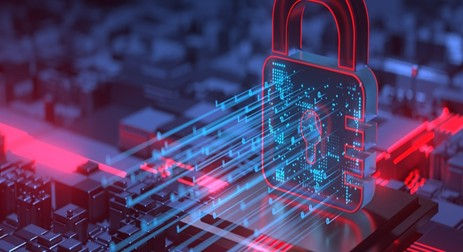Edge Computing vs. Cloud Computing: Which Will Dominate in 2024?
- Jukta MAJUMDAR

- 6 days ago
- 3 min read
JUKTA MAJUMDAR | DATE: DECEMBER 17, 2024
Introduction

In an era where technological advancements are reshaping every aspect of our lives, the debate between Edge Computing and Cloud Computing has become more pertinent than ever. Cloud Computing, with its vast data storage and processing capabilities, has long been the go-to solution for businesses worldwide. However, the emergence of Edge Computing, which processes data closer to its source, is challenging the status quo. This article explores the strengths and applications of both computing paradigms, and how their interplay is set to transform the future of data processing.
Understanding the Contenders
Cloud Computing
Cloud Computing, a well-established paradigm, centralizes data storage and processing in remote data centers, offering scalability and accessibility. However, its reliance on network latency can hinder real-time applications.

Edge Computing
Edge Computing, on the other hand, brings computation and data storage closer to the source, reducing latency and enabling faster response times. This decentralized approach is ideal for applications like autonomous vehicles, IoT devices, and AR/VR experiences.
The Battleground: A Closer Look
While Cloud Computing remains a cornerstone for many businesses, Edge Computing's unique advantages are compelling it to the forefront. As the demand for real-time insights and low-latency applications grows, Edge Computing is poised to become a critical component of modern infrastructure.
Real-time Processing
Edge Computing excels in handling time-sensitive data, enabling immediate decision-making. This is crucial for applications like autonomous vehicles, where split-second responses can be life-saving.
Reduced Latency
By processing data closer to the source, Edge Computing significantly reduces latency, improving user experience and application performance.
Enhanced Privacy and Security
Edge Computing can help mitigate privacy concerns by processing sensitive data locally, reducing the risk of data breaches.
Improved Reliability
By distributing processing power across multiple edge devices, Edge Computing can enhance system reliability and fault tolerance.
The Verdict: A Hybrid Future

In 2024, it's unlikely that either Edge or Cloud Computing will completely overshadow the other. Instead, we're likely to witness a hybrid approach, where both technologies work in tandem to deliver optimal performance and efficiency.
A recent study by Gartner predicts that by 2025, 75% of enterprise-generated data will be created and processed outside a traditional data center or cloud. This trend underscores the growing importance of Edge Computing in modern IT infrastructure.
The future of computing lies in a balanced ecosystem where Edge and Cloud Computing complement each other, driving innovation and shaping the digital world. By understanding the strengths and weaknesses of each approach, organizations can make informed decisions to optimize their IT strategies and achieve competitive advantage.

For further reading, consider these resources:
· Gartner
· Forbes
· AWS
Conclusion
As we look to the future, the interplay between Edge Computing and Cloud Computing offers a hybrid approach that leverages the strengths of both technologies. Edge Computing brings the promise of reduced latency, real-time data processing, and enhanced privacy, making it ideal for time-sensitive applications. Meanwhile, Cloud Computing continues to provide unparalleled scalability and centralized data management. By integrating these two paradigms, organizations can achieve a balanced, efficient, and innovative IT infrastructure that meets the demands of a rapidly evolving technological landscape. Embracing this hybrid model will not only drive digital transformation but also unlock new opportunities for growth and innovation.
Sources
Page Not Found - IoT programmable SIMs | IoT programmable core network-as-a-service | stacuity. (n.d.). IoT Programmable SIMs | IoT Programmable Core Network-as-a-service | Stacuity. https://stacuity.com/news-careers/news/key-iot-trends-2023/
Staff, C. (2024, August 13). Edge Computing vs. Cloud Computing: Differences and Use Cases. Coursera. https://www.coursera.org/articles/edge-computing-vs-cloud-computing
Spasojevic, A. (2023, December 28). Edge Computing vs. Cloud Computing: Benefits and Differences. phoenixNAP Blog. https://phoenixnap.com/blog/edge-computing-vs-cloud-computing
Yeung, T. (2022, September 17). What’s the Difference: Edge Computing vs Cloud Computing | NVIDIA Blog. NVIDIA Blog. https://blogs.nvidia.com/blog/difference-between-cloud-and-edge-computing/
What edge computing means for infrastructure and operations leaders. (n.d.). Gartner. https://www.gartner.com/smarterwithgartner/what-edge-computing-means-for-infrastructure-and-operations-leaders
Image Citation
Edge computing vs. Cloud computing: Key differences to know. (2024, October 30). Veritis Group. https://www.veritis.com/blog/edge-computing-vs-cloud-computing-what-are-the-key-differences/
Edge Computing vs Cloud Computing: What’s the Difference? - javatpoint. (n.d.). www.javatpoint.com. https://www.javatpoint.com/edge-computing-vs-cloud-computing





Comments